Follow and star our public account, to reach exciting content directly

Source: Embedded News Selected
Recently, I have been looking into which cores are suitable and cost-effective for selecting a chip, which is a task that requires combining various technical aspects and market analysis. It seems simple but still requires some preparation. Today, I chose a popular science article about the ARM Cortex series to share with everyone.
As we all know, ARM Holdings in the UK is a leader in the embedded microprocessor world. ARM has always developed its own microprocessor core architecture and then licensed this intellectual property to various chip manufacturers. The streamlined CPU architecture, efficient processing capabilities, and successful business model have led ARM to achieve great success, quickly capturing a significant portion of the 32-bit embedded microprocessor market.
Currently, with increasing demands for embedded systems, the overall performance of embedded microprocessors, as their core, is facing increasingly severe tests. The processing power of a high-end smartphone today can almost match that of a laptop from a few years ago. To meet market demands, ARM is also accelerating the development of their latest ARM architecture, and the Cortex series is one such product. So today, let’s take a closer look at the knowledge points of ARM Cortex series processors.
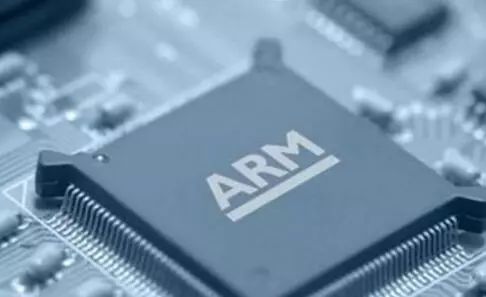
ARM Cortex Series Processors
After the classic ARM11 processor, ARM began naming its products with the Cortex name, dividing them into three categories: A, R, and M, aimed at serving various markets.
1. Cortex-A: Designed for advanced virtual memory-based operating systems and user applications
2. Cortex-R: Targeted at real-time systems
3. Cortex-M: Microcontrollers

ARM Cortex Series Processors – Cortex-A
The ARM Cortex-A series is a set of application processors used for complex operating systems and user applications. Cortex-A series processors support the ARM, Thumb, and Thumb-2 instruction sets.
The Cortex-A series processors from ARM are suitable for applications with high computational demands, running rich operating systems, and providing interactive media and graphics experiences.
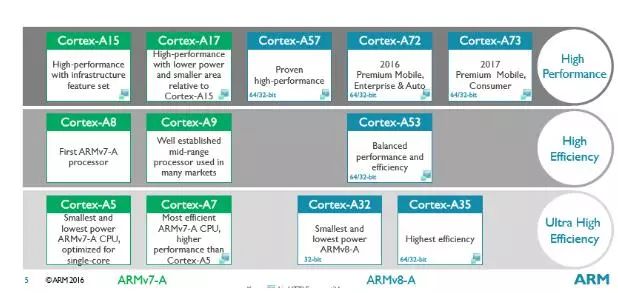
As shown in the figure, the green parts represent the v7-A architecture, while the blue parts represent the v8-A architecture. Generally, the green parts support both 32-bit and 64-bit, except for A32, which only supports 32-bit. If we must rank them, from high to low, they can be sorted roughly as follows: Cortex-A73 processor, Cortex-A72 processor, Cortex-A57 processor, Cortex-A53 processor, Cortex-A35 processor, Cortex-A32 processor, Cortex-A17 processor, Cortex-A15 processor, Cortex-A7 processor, Cortex-A9 processor, Cortex-A8 processor, Cortex-A5 processor.
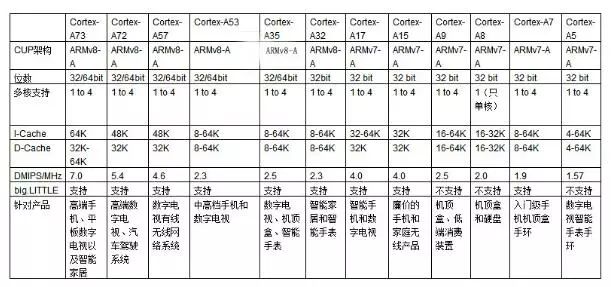
ARM Cortex Series Processors – Cortex-M
The Cortex-M processor family focuses more on the low-performance end, but these processors are still quite powerful compared to traditional processors used in many microcontrollers. For example, the Cortex-M4 and Cortex-M7 processors are used in many high-performance microcontroller products, with maximum clock frequencies reaching 400 MHz.
Of course, performance is not the only metric for selecting a processor. In many applications, low power consumption and cost are key selection criteria. Therefore, the Cortex-M processor family includes various products to meet different needs:
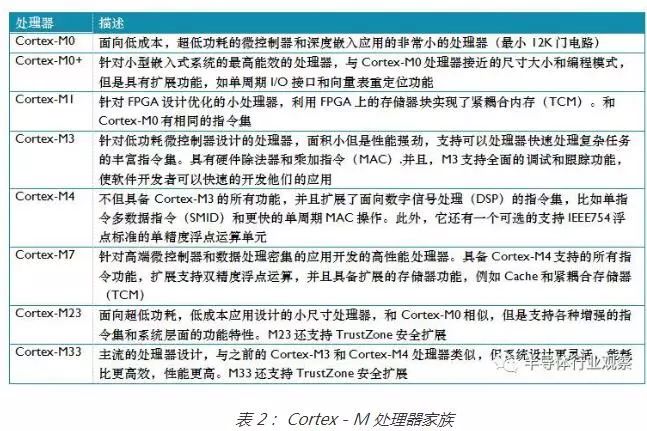
Unlike older classic ARM processors (e.g., ARM7TDMI, ARM9), the Cortex-M processors have a very different architecture. For example:
— Only supports ARM Thumb instructions, extended to support both 16-bit and 32-bit instructions in the Thumb-2 version
— The built-in nested vector interrupt controller handles interrupt processing, automatically managing interrupt priorities, masking, nesting, and system exception handling.
— Interrupt handler functions can be programmed using standard C language, and the nested interrupt handling mechanism avoids the need for software to determine which interrupt needs to be responded to. Additionally, the interrupt response time is deterministic and low-latency.
— The vector table has changed from jump instructions to the starting addresses of interrupt and system exception handler functions.
— The register set and some programming modes have also been changed.
These changes mean that many assembly codes written for classic ARM processors need to be modified, and older projects need to be updated and recompiled to migrate to Cortex-M products.
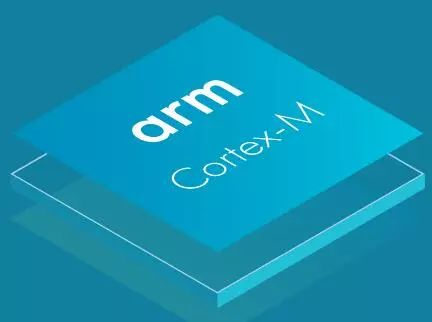
ARM Cortex Series Processors – Cortex-R
R4: The first embedded real-time processor based on the ARMv7-R architecture. Specifically designed for large-capacity deep embedded system-on-chip applications, such as hard disk drive controllers, wireless baseband processors, consumer product mobile phone MTK platforms, and automotive system electronic control units.
R5: Launched in 2010, based on the ARMv7-R architecture, extending the functionality of the Cortex-R4 processor, supporting higher levels of system performance, efficiency, and reliability in reliable real-time systems, and enhancing error management. These system-level features include low-latency peripheral ports (LLPP) and accelerator consistency ports (ACP), where the former is used for fast peripheral read/write, while the latter enhances efficiency and achieves more reliable high-speed cache consistency with external data sources.
Based on 40 nm G technology, the Cortex-R5 processor can operate at nearly 1 GHz, providing a performance of 1,500 Dhrystone MIPS. This processor offers a highly flexible and efficient dual-cycle local memory interface, allowing SoC designers to minimize system costs and power consumption.
R7: The Cortex-R7 processor is the highest-performing processor in the Cortex-R series. It is the standard for high-performance real-time SoCs. The Cortex-R7 processor is designed for implementations based on advanced chip processes ranging from 65 nm to 28 nm, with a focus on enhancing energy efficiency, real-time responsiveness, advanced features, and simplifying system design. Based on 40 nm G technology, the Cortex-R7 processor can operate at frequencies exceeding 1 GHz, providing 2,700 Dhrystone MIPS of performance. This processor offers a flexible local memory system supporting tightly coupled memory (TCM) local shared memory and peripheral ports, allowing SoC designers to meet stringent hard real-time requirements within limited chip resources.
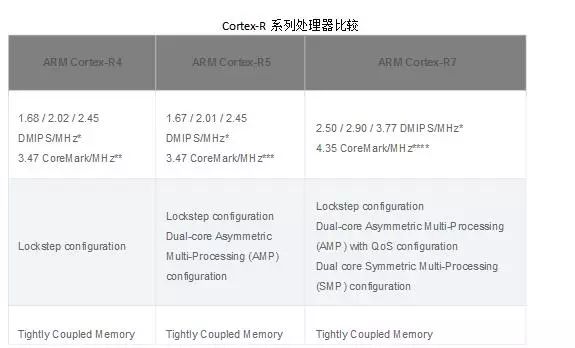
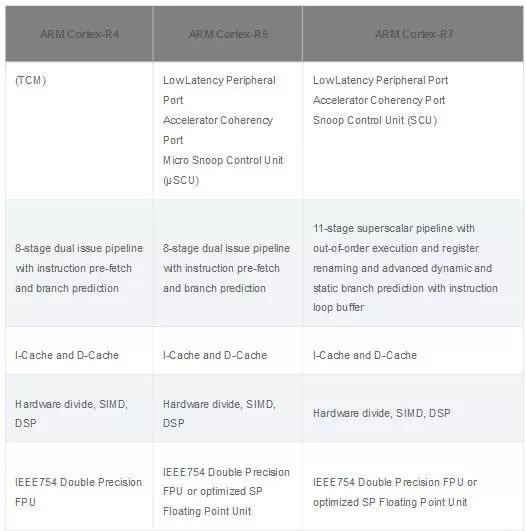
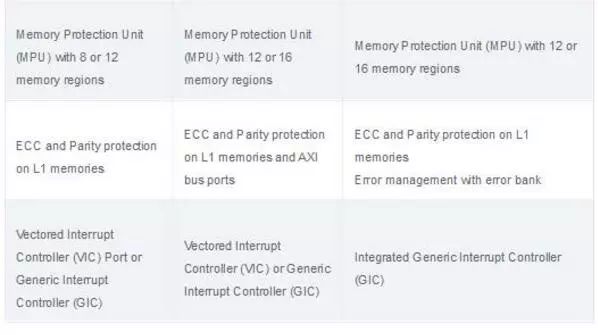
Disclaimer: This article is a network reprint, and the copyright belongs to the original author. If there are any copyright issues, please contact us. Delete
Embedded Programming Series
Linux Learning Series
C/C++ Programming Series
Qt Advanced Learning Series
Follow my public WeChat account and reply “Join Group” to join the technical exchange group according to the rules.
Click “Read Original” to see more shares.